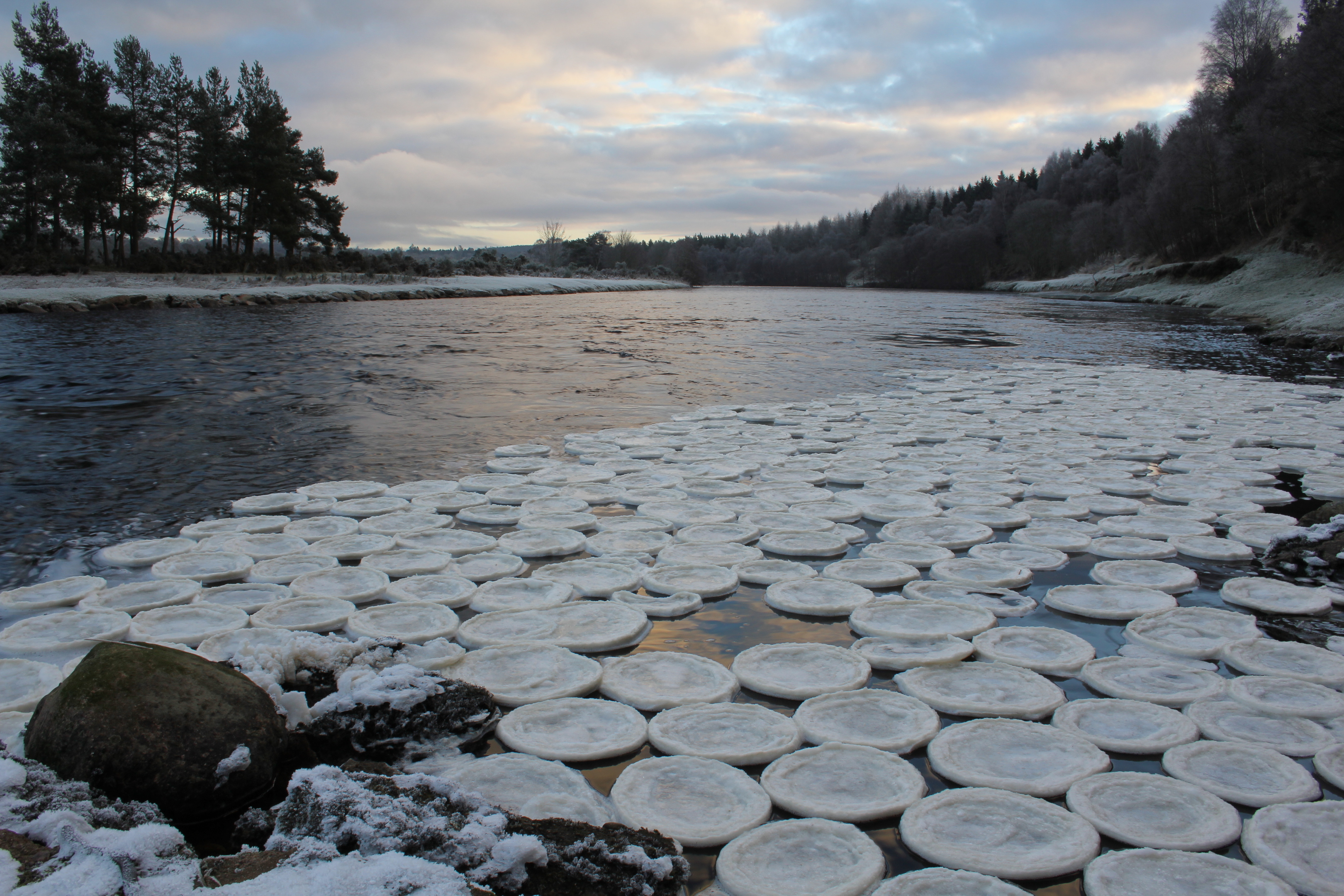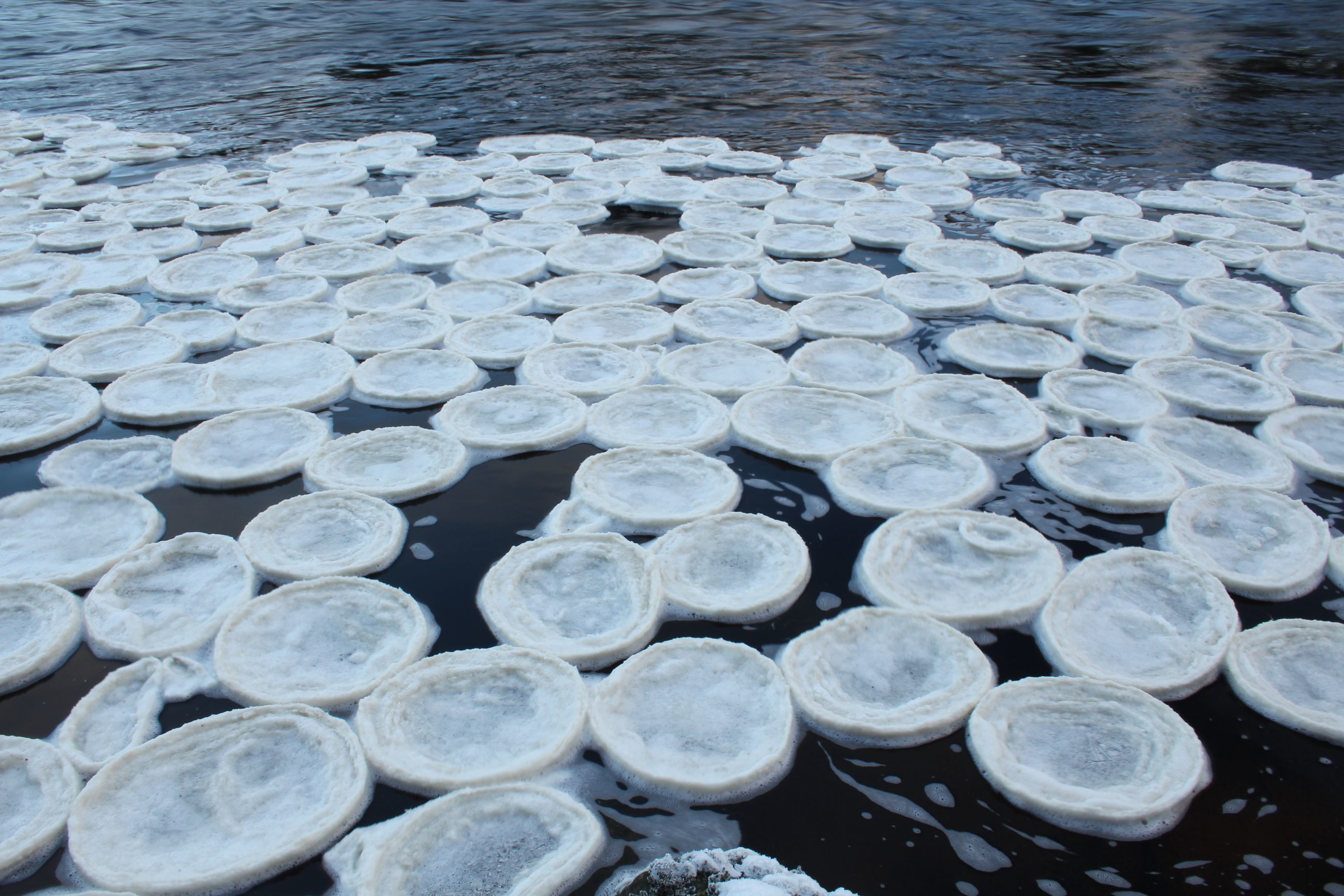They are more commonly seen in the Antarctic or the Baltic Sea, but now some unusual ice formations have been spotted in Deeside.
The “ice pancakes” have formed in a quiet spot of the River Dee, at the Lummels Pool at Birse, near Aboyne – the first time they have been seen in the area by those who work on the river.
The discs are made up of foam or slush on top that freezes, and is bashed into a circular shape by colliding with others as they float on the water.
Jamie Urquhart, a biologist at the River Dee Trust, photographed the ice pancakes when he spotted them last week.
He said: “I’ve actually seen them before at the River Brora in Sutherland a couple of winters ago, but they were much smaller – more the size of a saucer.
“It’s the first time we’ve seen them at the Dee. They are quite a rare occurrence, the conditions have to be right for them to occur. I’ve spoken to a number of people across the catchment, the people on the river, such as the ghillies and anglers, who have never seen them here before.”
The ice pancakes have formed in pool downstream from a fast-flowing part of the river, where the foam and froth gathers and circles together.
It is believed the foam froze overnight, and as it bashed into other frozen pieces, formed the dinner plate-sized ice pancakes. It is thought the rim is created due to rising temperatures during the day and the cooler nights.
The team at the River Dee Trust believe the hard frost from last week would have helped the discs form, but Mr Urquhart said it was “guess work” as to why this was the first time they had appeared.
He said: “I don’t know if it’s because we’ve had more extreme winters over the last couple of years, and then that hard frost.
“It’s guess work from our perspective, we’re using our knowledge of the river to deduct how they formed.
“It would be great to get any feedback on what they actually are, or how they form if anybody knows.
“I’ll definitely be keeping an out for them.”
Ice pancakes can have a diameter of up to 10ft, and be up to 4in thick. Collisions as they float about cause the raised rims, either from them getting bashed or from the foam and slush that is splashed up onto the edges.

